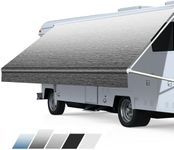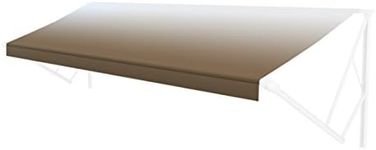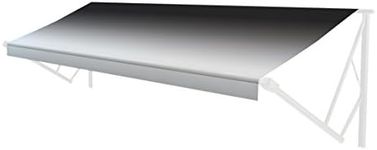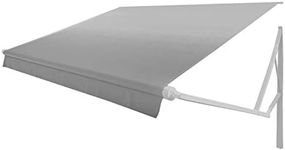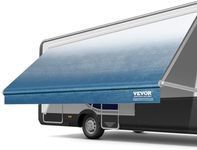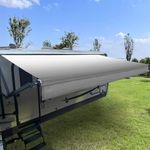Buying Guide for the Best Rv Awning Fabric
Choosing the right RV awning fabric is important for comfort, durability, and the overall look of your RV setup. The awning fabric protects you from sun, rain, and wind, and can make your outdoor space much more enjoyable. When shopping for awning fabric, it's important to consider the material, size, weather resistance, color, and ease of maintenance. Understanding these key features will help you select a fabric that matches your travel habits and the environments you visit.Material TypeThe material of the awning fabric determines how well it stands up to the elements and how long it will last. The two most common materials are vinyl and acrylic. Vinyl is waterproof and easy to clean, making it a good choice for rainy or humid climates, but it can get hot and may be less breathable. Acrylic is more breathable and resists fading, which is great for sunny, dry areas, but it is water-resistant rather than fully waterproof. To choose the right material, think about the typical weather where you camp and whether you prioritize easy cleaning or breathability.
Fabric Thickness (Weight)Fabric thickness, often measured in ounces per square yard or millimeters, affects durability and protection. Thicker fabrics are more robust and can handle wind and rain better, but they may be heavier and harder to handle. Thinner fabrics are lighter and easier to install but may wear out faster. If you camp in areas with strong sun or frequent storms, a thicker fabric is a good idea. For occasional use in mild weather, a lighter fabric may be sufficient.
UV ResistanceUV resistance refers to how well the fabric can withstand exposure to sunlight without fading or breaking down. High UV resistance is important if you spend a lot of time in sunny locations, as it helps the awning last longer and keeps colors looking fresh. Some fabrics are treated with special coatings to improve UV resistance. If you often camp in sunny areas, look for fabrics with strong UV protection.
Water ResistanceWater resistance determines how well the fabric keeps out rain and moisture. Some fabrics are fully waterproof, while others are only water-resistant. Waterproof fabrics are best for rainy climates, as they prevent leaks and keep the area under the awning dry. Water-resistant fabrics can handle light rain but may let water through in heavy downpours. Consider your typical camping weather when deciding how much water resistance you need.
Size and FitThe size of the awning fabric must match your RV's awning frame. Fabric is available in various widths and lengths, so it's important to measure your existing awning or the space you want to cover. Too small, and it won't provide enough shade; too large, and it may not fit your hardware. Always check your RV's specifications and measure carefully to ensure a proper fit.
Color and PatternColor and pattern affect both the appearance and the function of your awning. Lighter colors reflect sunlight and keep the area cooler, while darker colors may absorb heat but can hide stains better. Patterns can add style and personality to your RV setup. Choose a color and pattern that matches your taste and consider how it will look with your RV and in the environments where you camp.
Ease of Cleaning and MaintenanceSome fabrics are easier to clean and maintain than others. Vinyl is generally simple to wipe down, while acrylic may require more gentle cleaning to avoid damage. If you camp in dusty or muddy areas, or if you want to minimize upkeep, look for fabrics that are labeled as easy to clean or have special coatings to resist stains and mildew.


